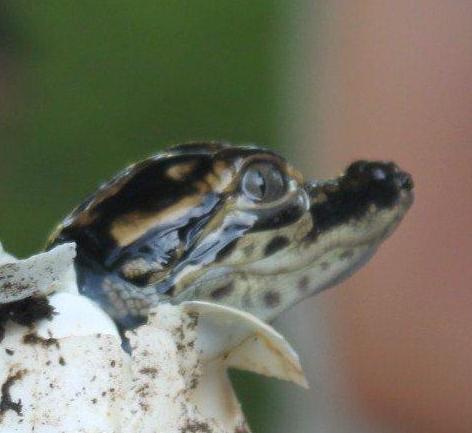|
Pond Life of Brazos Bend State Park
Giant Water Bugs: Family Belostomatidae
Giant
water bugs, also known as ferocious water bugs or toebiters, are
among the most common, and most impressive water bugs found at Brazos
Bend State Park. Although some members of this family are truly
giants, reaching a length of 3 inches, these are rarely seen here.
The giant water bugs we see most often are a small species, usually
about 1 inch long. Their small size notwithstanding, they are fierce
predators and will attack animals such as minnows or tadpoles much
larger than themselves.
|
The giant water bug of genus Belostoma, that we see most
often in Brazos Bend State Park are chocolate brown in color. They
are about 1 inch long when fully grown. Their bodies are flat and
wide with a pointed oval shape. The hind legs are large, and are
flattened into paddles for swimming.
|
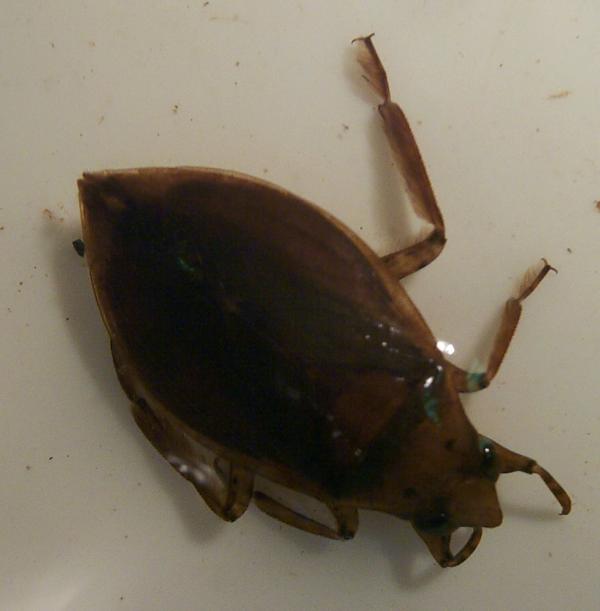
Giant water bug 25 mm
|
The hind and middle legs have small
double claws on the ends. The forelegs are short but powerful with
sharp claws on their ends. The head is triangular, almost
frog-like, with bulging eyes. Giant water bugs breath through
tubes at the end of their abdomen. These tubes are usually drawn
up into their bodies, and not often seen.
|
Giant
water bugs can be found year round in the ponds at Brazos Bend State
Park. In cold weather, however, they are usually very sluggish and
when found have their legs all folded up beneath them, so that they
look like leaves.
|
The
forelegs of the giant water bug are modified into powerful claws
that it uses to seize its prey. In scientific terminology, they
are said to be raptorial. Like most other hemiptera,
its mouth is modified into a long flexible beak that resembles an
elephant's trunk, with a bayonet on the end of it. When it stabs
its prey with this beak, chemicals are injected into the wound
that dissolve the prey's internal tissue. It then sucks the
dissolved tissue up through the beak. Giant water bugs should be
handled with extreme care, since their bite can be very painful.
|
|
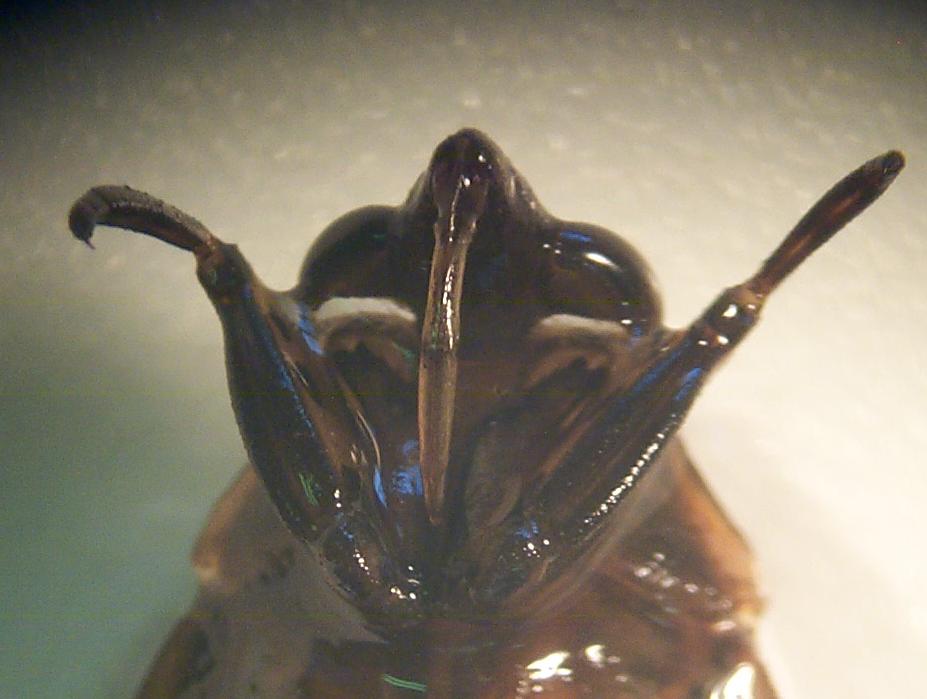
Beak and raptorial forelegs of giant water bug
|
|
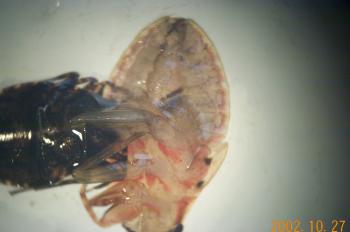
Juvenile giant water bug molting
|
|
Like all hemiptera giant waterbugs undergo incomplete
metamorphosis. The newly hatched young resemble the adults in
almost every respect except the lack of wings, and size. As they
grow, they frequently shed their exoskeletons to grow larger ones.
The picture at the left shows an immature giant waterbug coming
out of its old shell.
|
|
The
female belostoma attaches her eggs to her mates back in a
large pad. Sometimes, it completely covers the male's back. She
does this primarily for protection. He will take care of the eggs
until they hatch. If however the eggs fall off, he will eat them.
|
|
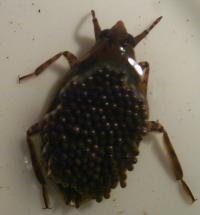
Male Giant water bug with eggs
|
Giant water bugs are sometimes confused with water
scorpions, especially the broad flat species, or with creeping
water bugs. Water scorpions do not have the flattened paddle-like
hind legs, and can not retract their breathing tubes. Creeping water
bugs have a very round head and their eyes do not bulge out from the
head like those of the giant waterbug.
Updated: Sep 06, 2011
|

